Healthcare print design is a crucial aspect of the healthcare industry. The design of healthcare materials, such as medical pamphlets, brochures, posters, and flyers, plays a significant role in communicating important information to patients and healthcare professionals. Effective healthcare print design can help to educate, inform, and engage patients, ultimately leading to better health outcomes.
Design for Accessibility and Clarity
One of the key considerations in healthcare print design is ensuring that the design is accessible and easy to understand for a wide range of audiences. Healthcare materials may be targeted at patients with varying levels of health literacy, cultural backgrounds, and language abilities. Therefore, healthcare designers need to consider using plain language, simple and clear visuals, and easy-to-read typography.
Typography
Typography is an essential element of healthcare print design. Fonts should be legible, clear, and easy to read at a range of sizes. It is important to use a font that is appropriate for the context of the healthcare material. For example, a sans-serif font may be more appropriate for a healthcare brochure aimed at a younger audience, while a serif font may be better suited to a medical research report.
Color
Color is another important consideration in healthcare print design. Color can be used to highlight key information, create a visual hierarchy, and evoke emotions. However, it is essential to consider the cultural connotations of color and to ensure that the chosen colors do not have negative connotations or associations. For example, red may be seen as a warning color in some cultures, while green may be associated with healing.
Images and Graphics
The use of images and graphics is another key element of healthcare print design. Images can help to convey complex information quickly and clearly, while graphics can be used to create visual aids that illustrate key points. However, it is important to ensure that images and graphics are appropriate for the context of the healthcare material and that they are used ethically and sensitively.
Patient Education Materials
One area where healthcare print design is particularly important is in patient education materials. Patient education materials are designed to help patients understand their health conditions, treatment options, and how to manage their health. Effective patient education materials should be easy to read and understand, use plain language, and be visually engaging. They should also be tailored to the patient’s individual needs and preferences.
Promoting Public Health Initiatives
Healthcare print design is also essential in promoting public health initiatives. Health campaigns, such as those aimed at promoting vaccination or encouraging healthy lifestyle choices, rely on effective design to communicate their message. Designers must consider the target audience, the desired outcome, and the most effective way to convey the message in a clear and engaging way.
Medical Research Publications
In addition to patient education materials and public health campaigns, healthcare print design is also used in medical research publications. Medical research publications are designed to communicate the latest research findings to healthcare professionals and researchers. Effective medical research publications should use clear and concise language, be well-structured, and use appropriate typography and graphics to convey complex information.
Challenges in Healthcare Print Design
One of the challenges of healthcare print design is keeping up with the latest trends and best practices. Healthcare is a rapidly evolving field, and new research and developments can have significant implications for healthcare design. Designers must stay up-to-date with the latest research and best practices in healthcare design to ensure that their materials are effective and engaging.
Another challenge of healthcare print design is ensuring that the design meets regulatory requirements. Healthcare is a highly regulated industry, and designers must ensure that their materials comply with relevant regulations and guidelines. For example, pharmaceutical companies must comply with strict regulations governing the design of drug packaging and labeling.
Conclusion
Healthcare print design plays a critical role in communicating important information to patients and healthcare professionals. Effective healthcare print design can help to educate, inform, and engage patients, ultimately leading to better health outcomes. Designers must consider a range of factors, including typography, color, images, and graphics, and ensure that their materials are accessible and easy to
